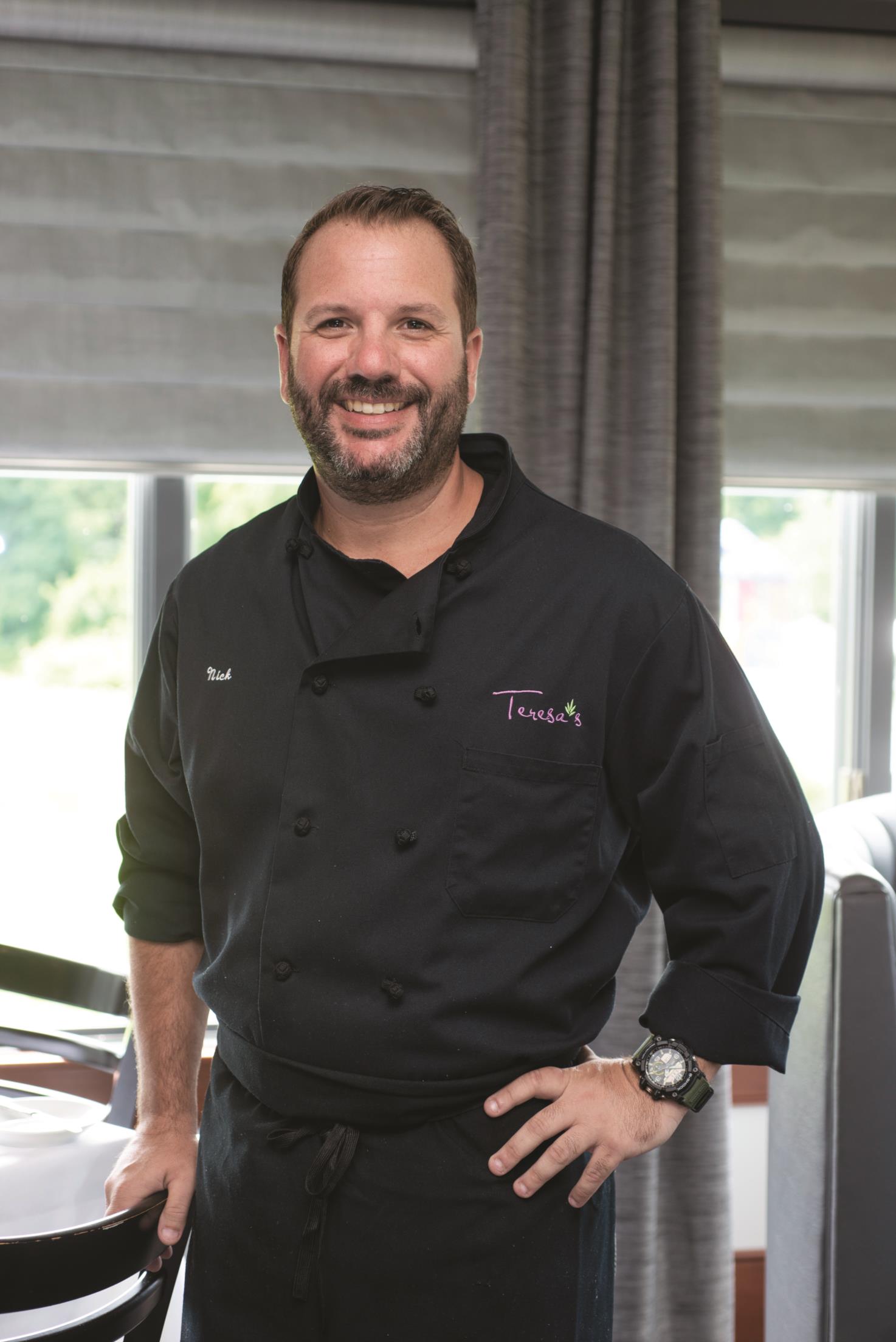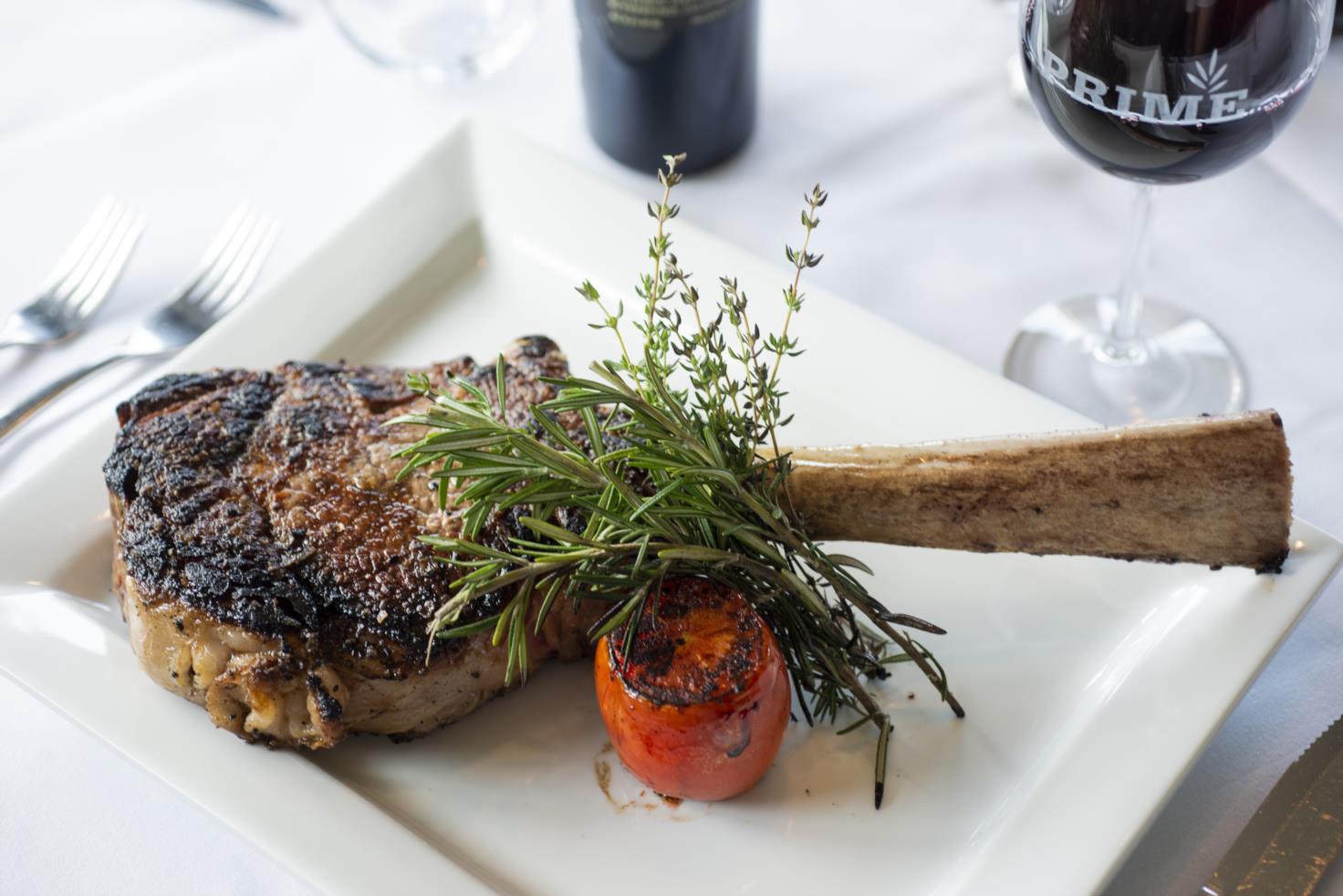Top chefs give us some tips on playing with fire.
JEANNE O’BRIEN COFFEY SEPTEMBER 24, 2018
Professional chefs use many methods to test steak for doneness. Daniel Gursha, executive chef at Ledger in Salem, slides a super-thin cake tester into the meat, and then touches it to his lip. Cool is rare, while too-hot-to-touch is well done. Executive chef Steve Zimei of Chopps American Bar and Grill in Burlington swears by the famous finger test—judging the temperature by comparing the firmness of the meat to the firmness of various parts of your hand. But if you don’t spend 10 hours a day sweating over an open flame, with the scars to prove it, just use a meat thermometer. The tiny puncture it makes is well worth knowing your meat is properly cooked.
“I can’t imagine hosting a group of people and not being confident about how your meat is done,” says Matt O’Neil, chef/owner at Ledger and Blue Ox in Lynn and former cooking coach for ESPN (yes, that’s a thing). “Rely on a meat thermometer—it’s a sure thing.”
Besides, there are plenty of ways to impress guests at your next tailgate without risking food poisoning, starting with charcoal. O’Neil says if you bring briquettes instead of a gas grill, you are already ahead of the game.


40-ounce Tomahawk Ribeye “Fiorentina Style”
By Executive Chef Nick Yebba Jr., Teresa’s Prime, North Reading
Ingredients
40 OZ. Tomahawk ribeye or
Porterhouse steak
1 BUNCH Fresh thyme
1 BUNCH Fresh rosemary
4 TBSP. Extra-virgin olive oil
⊲ Maldon sea salt and
Coarse black pepper
⊲ Butcher’s twine
Directions
1. Preheat grill on medium-high heat. Season both sides generously with salt and pepper.
2. Tie the rosemary and thyme together with butcher’s twine to form an herb brush. Use the herbs to brush the steak with extra virgin olive oil.
3. Place the steak on the hot grill, cooking about 10 minutes on each side. Serve medium-rare to rare.
4. Remove steak when it is done and let rest for 5 minutes before slicing and serving
“Those tiny gas grills don’t work,” O’Neil says. “They won’t get hot enough.” Plus, hardwood briquettes add flavor and allow you to try one of Ledger’s coolest tricks—cooking steak directly on the coals. For the skirt steak lunch special at Ledger, Gursha uses a blow dryer to stoke the flames, getting the coals in his custom wood-fired grill blazing hot, and then drops the meat right on top.
“You’re basically suffocating the flame, so it doesn’t flare up,” Gursha says, noting this technique is really best for a cut that you plan to serve very rare. He sears the meat on both sides, and takes it out and bastes it with melted butter—brushed from a small cast-iron skillet sitting right on the grill—and then drops it back in. The resulting cut of meat is gorgeously caramelized on the outside and tender and rare on the inside.
Be it charcoal or gas, high heat is critical to any searing situation, says Nick Yebba, Jr., executive chef at Teresa’s Prime in North Reading, where they sell up to 1,000 pounds of meat a week. At his restaurant, the broiler runs at a whopping 1,200 degrees. Steaks start on a special searing plate to seal in all the juices, and then are finished in the broiler.
Home cooks may not have—or honestly even want—the ability to cook at 1,200 degrees (you need to drink a lot of water, Yebba says), but you do need to give your grill a chance to warm up. For charcoal, that means waiting until all the coals are gray. For gas, that means turning on the burner a good 15 or 20 minutes before you want to cook, Yebba says, noting that too often, someone will turn on the grill, grab the meat, and toss it on right away. [more]
Secrets of Successful Grilling published first on https://turbogrill.us/
via Tumblr Secrets of Successful Grilling
via Unbound - Blog http://turbogrill.weebly.com/blog/secrets-of-successful-grilling
posted first on https://turbogrill.us/
No comments:
Post a Comment